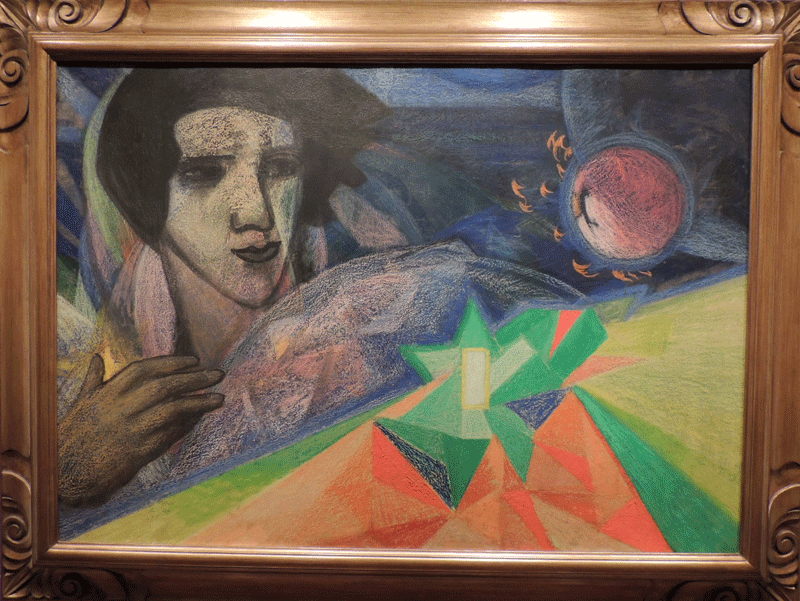Source: WTL photograph© at the Special Exhibition of "Paint the Revolution: Mexican Modernism 1910 - 1950," at the Philadelphia Art Museum, December 13, 2016.
Image:
"Futurist Portrait of Nahui Olin" (c. 1921) by Dr. Atl. Oil and Atl color (Atl color = oil, wax, dry resin, and gasoline) on cardboard.
Comments: This is a "futurist" portrait of Carmen Mondragón, (1893–1978), who was a Mexican poet and artist whom he named Nahui Olin. Dr. Atl had an erotic relationship with her. "Nahui Olin" means "four movements" in Náhuatl, which four movements the Aztecs identified with earthquakes.
Futurism was one of a plethora of art and political movements during the first half of the 20th century in both Europe and the Americas. Futurism, specifically (if it even had an organized agenda) was a political and artistic movement that began in Italy; hence Dr. Atl's trip to Italy. This movement was tangential to the predominant Mexican modern art scene, yet some of its program, such as speed, modern machines, industrial objects, youth, and violence, found some place, as you will see, in Mexican art during the period of 1910 to 1950.
For other paintings by Dr. Atl, see: => #7 and => #7a.
Humanities Question: Knowing that the figure on the left seemingly referred to Carmen Mondragón, how do the various elements (identify them) in this painting come from and refer to her character Dr. Atl identified as Nahui Olin?


